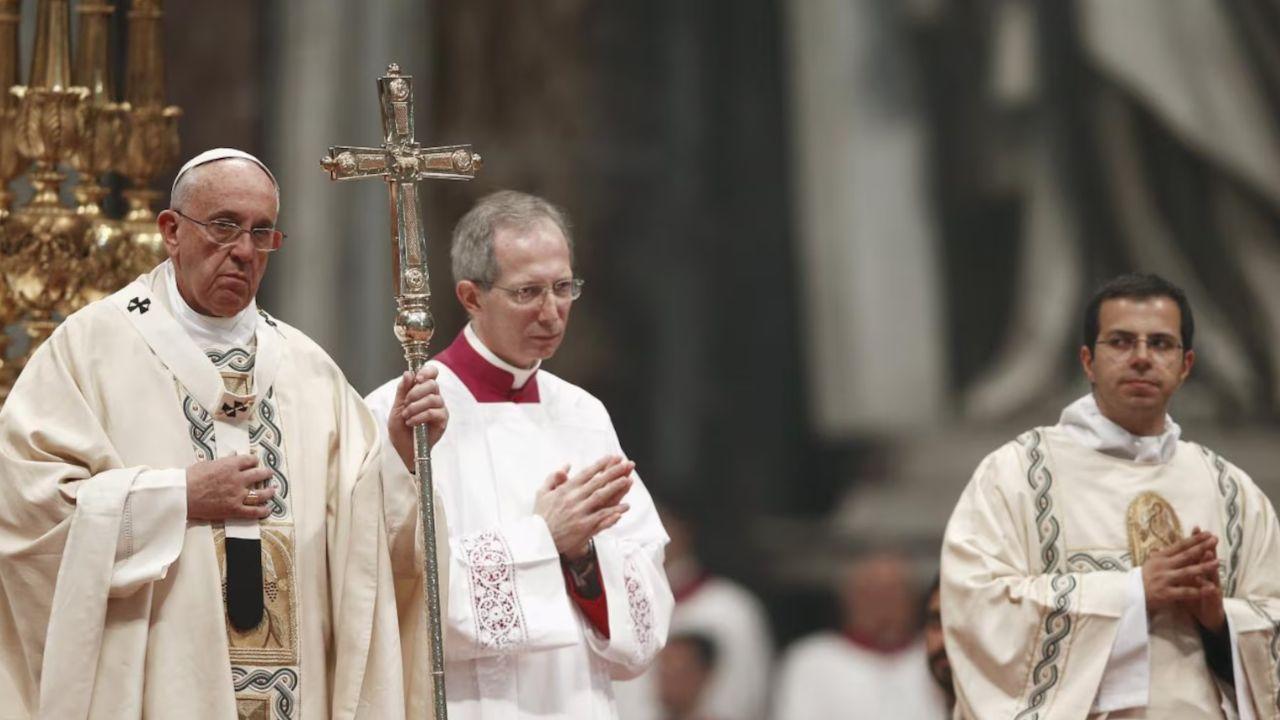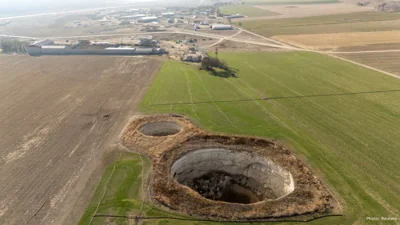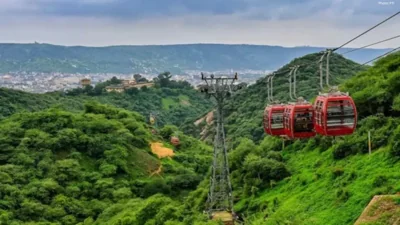
Post by : Priya
Photo:Reuters
In a landmark move, the Turkish government has announced that several ancient Armenian churches located in the eastern part of the country will now receive protected heritage status. This decision marks a significant shift in Turkey’s approach to cultural preservation, particularly toward Armenian religious and historical sites that have long been under threat from neglect, environmental damage, and lack of official oversight.
The Ministry of Culture and Tourism’s recent decision was welcomed by historians, cultural preservationists, and even international observers. It represents a growing recognition of Turkey’s multi-layered history and its responsibility to preserve monuments that form part of not just Turkish, but global cultural heritage.
Armenia’s Historical Roots in Eastern Turkey
The Armenian people have lived in the region now called Eastern Turkey for thousands of years. Long before the modern Turkish Republic was founded in 1923, eastern provinces like Van, Erzurum, Bitlis, and Kars were home to flourishing Armenian communities. During the medieval period, cities like Ani—once the capital of the Bagratid Armenian Kingdom—were considered cultural and religious centers, often referred to as the “City of 1,001 Churches.”
Armenians built intricate stone churches, monasteries, and religious schools, many of which still stand today, albeit in varying states of decay. These buildings reflect the sophisticated architectural and artistic traditions of the Armenian people. For centuries, they were centers of learning, worship, and community life.
However, the early 20th century saw great upheaval. Following the collapse of the Ottoman Empire and during World War I, the Armenian population was devastated by mass killings and forced deportations in what is widely recognized as the Armenian Genocide of 1915. As communities disappeared, many Armenian religious sites were abandoned, looted, or left to fall apart.
The Churches Under Protection
Among the newly protected sites are some of the most historically significant Armenian churches in Turkey. While the government has not released a full list yet, officials confirmed that sites in Van, Kars, and Erzurum are included.
One of the most well-known among them is the Church of Saint Gregory of Ani, located near the Armenian border in Kars Province. Built in the 10th century, this structure is a fine example of medieval Armenian architecture. Despite centuries of damage from earthquakes, neglect, and looting, the church still stands as a powerful symbol of a once-thriving civilization.
Other churches reportedly under protection include the Holy Cross Church on Akhtamar Island in Lake Van, a 10th-century cathedral that was partially restored in the early 2000s, and several lesser-known chapels and ruins scattered across the region’s mountainous terrain.
By granting these churches protected status, Turkey is formally recognizing their value as part of the nation’s cultural heritage. This status means that the sites cannot be altered, damaged, or destroyed without permission from the authorities, and that restoration work must follow guidelines that preserve their historical and architectural authenticity.
What Protected Status Means in Practice
Protected heritage status in Turkey falls under the authority of the Ministry of Culture and Tourism and local cultural heritage boards. When a site is granted this designation, it receives legal protection against destruction or unauthorized renovation. Government funding may be allocated for maintenance and restoration, and the site is often included in national and regional tourism promotion.
This move is not without precedent. In the past two decades, Turkey has granted similar status to various Greek Orthodox, Assyrian, and other non-Muslim heritage sites. However, the inclusion of Armenian churches—especially those that have long been neglected or politically sensitive—is seen as a significant and somewhat bold move.
Heritage experts stress that designation is just the first step. Effective implementation requires continuous funding, technical expertise, and a long-term vision for conservation. Without proper follow-through, protected status can remain a symbolic gesture rather than a practical safeguard.
Armenian Churches and International Attention
Armenian churches in Turkey have long drawn attention from global organizations, particularly UNESCO, human rights groups, and academic institutions. The condition of these churches has often been cited as evidence of the Turkish state's failure to recognize and preserve the cultural legacy of Armenians.
UNESCO, which oversees the list of World Heritage Sites, has previously called for better protection of Armenian cultural monuments. Although the medieval city of Ani was added to UNESCO’s list in 2016, many other churches were not included, partly due to their deteriorated condition and lack of maintenance.
The new protection status has reignited calls for international cooperation. Cultural experts suggest that joint efforts between Turkey and Armenian institutions, including restoration projects and historical research, could set a new standard in heritage diplomacy.
Reactions From Stakeholders
Local Communities:
Some local communities in Eastern Turkey welcomed the move, particularly those involved in tourism. Local tour guides and business owners hope that preserved churches could attract visitors, researchers, and pilgrims from around the world, bringing much-needed income to the region.
Armenian Diaspora:
Reactions from the global Armenian community have been mixed. While some see the announcement as a positive step, others remain cautious. They point out that many Armenian sites have suffered years of neglect and question whether the Turkish government is genuinely committed to protecting their heritage.
Scholars and Historians:
Academics and cultural historians have generally praised the decision. Many have called for more transparent restoration processes, with the inclusion of independent scholars and conservation experts.
Government Officials:
Turkish officials have described the move as part of a broader policy to protect the country’s diverse cultural heritage. In statements to the press, the Ministry emphasized that historical monuments from all communities—Muslim, Christian, and others—are valuable parts of Turkey’s national identity.
Challenges Ahead
Despite the optimistic tone of the announcement, challenges remain. Restoring ancient buildings, especially those in remote or rugged areas, requires skilled workers, advanced materials, and significant financial investment. Many of these churches have already lost large portions of their roofs, walls, or artistic details.
Additionally, some churches are located on privately owned land, creating legal and logistical hurdles for conservation efforts. There is also concern over whether local authorities have the expertise or political will to follow through with proper maintenance.
Another key challenge is education and awareness. Many local residents, especially younger generations, may not know the historical significance of these churches. Without strong local engagement, preservation efforts can feel disconnected from the communities they’re meant to benefit.
Bridging the Cultural Gap
One of the more hopeful aspects of this development is its potential to build cultural bridges. By recognizing Armenian churches as a part of Turkey’s own history, the country may take a small step toward healing historical wounds.
In recent years, there have been small but important signs of dialogue between Turkish and Armenian scholars, civil society groups, and religious leaders. Cultural projects, academic exchanges, and public discussions about shared history have started to emerge, albeit slowly.
Preserving Armenian churches could become a practical way to encourage this dialogue. It sends a message that Turkey is willing to face its complex past and celebrate its diverse heritage.
The Role of Tourism and the Economy
Eastern Turkey, while rich in natural beauty and historical sites, is less developed in terms of tourism compared to the western provinces. Preserving and promoting Armenian churches could help diversify local economies.
Cultural tourism has proven successful in other parts of Turkey, such as Ephesus and Cappadocia. If similar care is given to Armenian sites, they could attract tourists from Armenia, the Armenian diaspora, and travelers interested in religious or historical tourism.
Tourism officials have already suggested creating new travel routes that connect major historical sites across Eastern Anatolia, with Armenian churches as key highlights. Such initiatives could bring international attention and sustainable development to the region.










Dhurandhar Surpasses 800 Crore Mark at the Box Office
Ranveer Singh's Dhurandhar rakes in ₹800 crore globally, with the hit song Shararat captivating audi

Kriti Sanon Discusses Her Complex Role in Tere Ishk Mein
Kriti Sanon initially found her role in Tere Ishk Mein negative but grew to understand and appreciat

Release of 130 Students From St Mary’s Catholic School Marks Hopeful Turn in Nigeria
Nigerian authorities announce the release of 130 students from St Mary’s, ensuring no pupil remains

President Murmu Endorses SHANTI Bill to Propel Nuclear Energy Expansion
President Droupadi Murmu endorses the SHANTI Bill, facilitating private sector involvement in nuclea

New Zealand Claims Test Series with Decisive Victory Over West Indies
New Zealand triumphed over West Indies by 323 runs in the final Test, securing a 2-0 series win with

Centre Affirms Protection for Aravalli Hills Amidst Mining Concerns
Government asserts over 90% of Aravalli hills remain protected, dismissing mining concerns as misinf